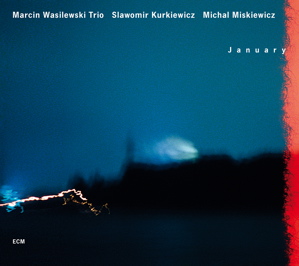- Performance:

- Sound:

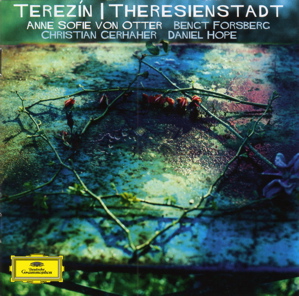
Even cigarettes can lead to revelations. In August 1942, when Baron Gören von Otter was the secretary to the Swedish Legation in Berlin, he lit a cigarette for Waffen SS officer Kurt Gerstein on a railroad platform near Warsaw. Soon after he realized that he had met a government official, Gerstein was telling von Otter that he had witnessed Jews being gassed. On that day alone, he had witnessed more that 10,000 die.
Although Von Otter alerted the Swedish government, noting that he found Gerstein credible, the authorities chose not to act. Fifty-eight years later, when his daughter, mezzo-soprano Anne Sofie von Otter, received an invitation to perform at the Stockholm International Forum on the Holocaust, she realized that her participation would have pleased her father, who was haunted by his failure to stop the slaughter for the rest of his life.
Rather than singing relatively familiar music by Jews such as Mahler and Korngold, von Otter gravitated toward songs written by composers who were imprisoned in TerezÃn (or, as the Germans called it, Theresienstadt), Hitler’s “model” concentration camp near Prague. Over the course of Hitler’s reign, nearly 200,000 artists, musicians, scholars, and writers (as well as their spouses and children) from nine countries – virtually the entire Jewish cultural elite – passed through TerezÃn.
The camp became an artistic cauldron, where a host of musicians and performers managed to create music and art amidst the horror. TerezÃn’s inmates were not only given the right to entertain their fellow prisoners, but were at one point forced to participate in a whole range of plays, concerts, operas, operettas and café concerts as part of a grand propaganda ruse. While Hitler may have fooled the International Red Cross into believing that he was taking care of those interned in his “city for the Jews,” over 30,000 eventually died there from disease and starvation, while more than 88,000 were sent to their deaths at Auschwitz.
Miraculously, some of their music, as well as 6000 drawings by children, managed to survive. Interned composer and conductor Viktor Ullmann described the artistic ferment of TerezÃn thusly: “We did not simply sit down by the rivers of Babylon and weep, but evinced a desire to produce art that was entirely commensurate with our will to live.” While Ullmann did not starve to death, as did many of TerezÃn’s inmates, he along with famed composers Hans Krása and Pavel Haas was shipped to Auschwitz on October 15, 1944. All three died in the gas chambers that same day.
On TerezÃn | Theresienstadt Von Otter performs an extraordinary service by assembling a wide range of music by nine composers; only one, Martin Roman, survived the war. Some of the most simple and poignant music comes from Ilse Weber, who wrote more than 60 poems in TerezÃn, some of which she set to music and performed with guitar accompaniment during her night rounds as a nurse. In the end, Weber voluntarily accompanied sick children from the camp as they were being sent to their death. Eyewitnesses report that, while in the gas chamber, she died singing her own lullaby, “Wiegala,” to the children. Von Otter’s performance is indescribably tender and free, the high, softly sung tones floating like whispers of hope.
Von Otter, 51 at the time of the recording, is at the top of her form. Her plangent, caressing tone and intentionally understated delivery of the CD’s opening selection, Weber’s “Ich wander durch Theresienstadt” (I wander through Theresienstadt), immediately underscores the irony of a sweet, simple melody giving voice to sadness and suffering. Everywhere she is ideally supported by her longtime pianist/collaborator, Bengt Forsberg. Singing rousing cabaret songs by Karel Svenk, one of which is enhanced by the evocative accordion of Bebe Risenfors, the mezzo employs countless rousing accents to laugh in the face of persecution and hardship. This is art at its communicative best.
Nor does von Otter monopolize the proceedings. Tapping the talents of fellow greats, she consigns “male” songs by Weber, Krása, and Haas to baritone Christian Gerhaher. Violinist Daniel Hope ends the program with a virtually symphonic rendition of Erwin Schulhoff’s Sonata for Solo Violin. Clearly, von Otter wants this CD to focus on the music and those who wrote it, not the Diva who made it possible.
The album, ultimately, is a miracle. A remarkable testimony to the transcendent power of art, it speaks of hope, longing, and suffering almost too vast to comprehend. Von Otter’s predominantly light touch, which only verges on the operatic in the idiomatically Jewish and “artier” songs, serves her cause in the best possible ways. She leaves us, not in a state of despair, but uplifted by music’s ability to transform and transmute.
- Performance:

- Sound:

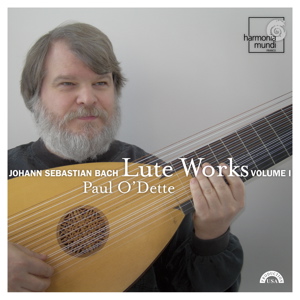
Â
Lutenist Paul O’Dette has music in his hands. Thus, the space between slowly voiced individual notes in the profoundly beautiful works by J.S. Bach on this program speak with a poetry all their own. Notes hang in space, their overtones, reverberation, and decay drawing us in until the next note comes along. This is wonderful, eye-opening playing, where technical challenges rarely distract from Bach’s transcendent language.
In baroque orchestral concert, the delicate sound of the lute is often obscured by the sonorities of fuller bodied instruments. But in solo performance and recording, – especially recordings as clear and airy as this – we can truly enjoy the depth and breadth of this splendid instrument.
Bach’s works for lute have long confounded musicians and scholars, who have for the most part found them unplayable on the lute commonly used during Bach’s lifetime. In the case of Bach’s “Piéces pour la Luth à Monsieur Schouster,” O’Dette’s solution is to transpose Bach’s own arrangement of the C-minor Cello Suite to A minor.
Similarly, O’Dette’s F major transposition of Bach’s wonderful Partita in E major for solo violin is a revelation. Bach himself had arranged the work for Lautenwerk, a gut-strung harpsichord that sounded uncannily like a lute, so playing it on the lute seems only logical. Besides, what matters logic when music is this captivating?
- Performance:

- Sound:

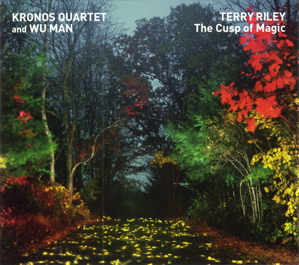
Peyote rituals, Chinese lullabies, Indian ragas, children’s toys, sacred bonds, and secular madness all dance and swirl in ritualistic fashion in Terry Riley’s extraordinary The Cusp of Magic. Commissioned by the Kronos Quartet – with whom Riley has collaborated ever since he met its founder, David Harrington, while Riley was teaching at Mills College in the ’70s – the work celebrates the composer’s 70th birthday. The 43-minute quintet also draws upon the talents of another frequent Riley collaborator, pipa player Wu Man.
Some critics have suggested that The Cusp of Magic represents a new direction for the “father of Minimalism.” But those who have followed Riley’s path since his seminal In C changed the course of music history, see continuity. In C derived from a single page of 53 different repetitive patterns that came to Riley “as a kind of gift” one night in 1964 as he was riding the bus, stoned, to his night job playing ragtime, sing-along, and rinky-dink at San Francisco’s Gold Coast Saloon.
Six years later, around the same time he met Harrington, Riley began studies with North Indian vocalist Pandit Pran Nath. Ashe continued his sacred excursions through music, celebrations of peace, space adventures, lives taken too soon, far-out jazz, and electronic soundscapes unfolded from his pen. The Cusp of Magic, a celebratory, pancultural, peyote ritual for the new century, thus represents a logical progression in this musical shaman’s journey.
The six-part quintet’s opening movement, “The Cusp ofMagic”, is a rite of midsummer. (The title derives from the writings of Gary Goldschneider, to whom Riley dedicates the work.) In this 10-minute entry into the mystical, profound poundings on the bass drum, a repetitive rattle, the irregular meters of Native American song, and the murmurings of a synthesizer contrast with the sounds of string quartet and pipa. In two succeeding movements, “Buddha’s Bedroom” and “The Nursery,” the lovely, unaffected singing of Elisabeth Commanday soulfully intones lullabies by Wu Man and Riley. In addition to a wonderful pipa solo, we hear rattles, charms, whizzing sounds, strange laughter, and other surprises. Those who have journeyed will recognize the mixing of the sacred and the mundane in helter-skelter fashion.
A song meant to celebrate a wedding, written in the form of a North Indian gat, begins the fourth movement (aptly titled “Royal Wedding.” The movement continues to build, with sonorous contributions from Kronos’ latest cellist, Jeffrey Ziegler, creating passages of great rhythmic intensity.
The ear-catching fifth movement, “Emily and Alice,” employs the delightful sounds of toys belonging to Harrington’s granddaughter Emily and Kronos manager Janet Cowperthwaite’s daughter Alice. At one point,Tchaikovsky’s Nutcracker makes an appearance, as does the tune of Russian cartoon character Cheburashka. Eventually the tone becomes somber, as Riley reflects on the life-threatening, global challenges of the world.
The ritual ends with the irresistible rhythms and colors of”Prayer Circle.” As the thin, slightly craggy sound of the pipa contrasts with the warmth of the string quartet (which sounds far more ingratiating on a goodsoundsystem than amplified in live performance), the work concludes with anecstatic flourish. To my ears, the final notes proclaim “Yes!”
- Performance:

- Sound:

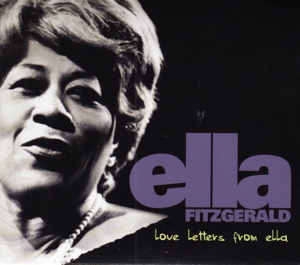
How poorer our lives would be without the art of Ella Fitzgerald. Over a recording career that spanned a remarkable 57 years, the First Lady of Song touched untold millions with her irrepressible joy, spot-on jazz scatting, and sophisticated delivery. Although, in her later years, the vibrato began to widen, and she sometimes found it necessary to control her instrument by singing shorter notes, her ability to imbue familiar standards with freshness remained supreme.
On this priceless collection of 10, never-before-released love songs, recorded between 1973 and 1983, Ella variously waxes ecstatic (“Please Don’t Talk About Me When I’m Gone”) and sings of faded blossoms with a promise of renewal in her voice (“Some Other Spring”). Both those tracks, recorded with Count Basie and His Orchestra when she was almost 62, are so wonderful that it’s hard to believe that they languished in the vaults so long. Just listen to how brilliantly she descends the scale at the conclusion of “Take Love Easy,” recorded with the legendary Joe Pass and the London SymphonyOrchestra in the mid ‘70s. Even as late as 1983, when she was 66 years old, Ella’s slightly frayed instrument can whisper, caress, and tease through “Our Love is Here to Stay” with unparalleled style and grace, then scat full voice to Andre Previn’s perfectly judged pianism as if time had stood still.
- Performance:

- Sound:


Â
Shelley Morningsong is real. When this profound singer/songwriter of Northern Cheyenne heritage sings to Grandmother Moon over rocking accompaniment, I believe her. When she asks who will sing for ancient souls, I know that she feels the innocence and sadness of Native Americans who have fallen victim to genocide. When she honors her ancestors, and the Creator who never abandoned them, I feel moved to honor them in turn.
Interspersing her contemporary delivery with heart-tugging ancient chants, evocative flute, and sterling support from Larry Mitchell’s electric guitar, bass, and drums, Morningsong weaves her spell. No wonder this first solo album, issued after many years of performing with others, received awards for “Debut Artist of the Year” (Nammy Awards), “Best Rock Album” (Indian Summer Music Awards), and “Best Native American Record (New Mexico Music Awards).
“Can’t make peace with the past by hiding from the light,” sings Morningson in a husky, salt-of-the-earth voice reflective of inner struggle and empowerment. “Life’s mystery is always unfolding. Embrace the beauty all around you. Let love and life surround you.” Absolutely. Urgently recommended.
Â
Â


